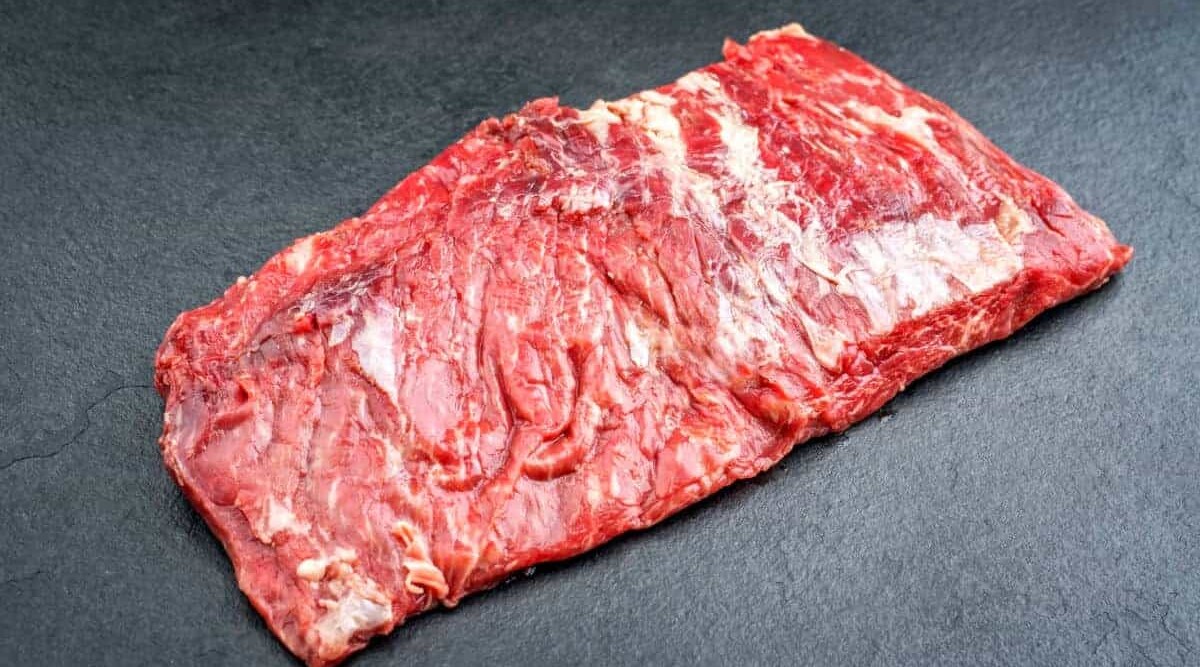
Bavette steak is a long thin cut of beef with a visible coarse grain, that is cut that from the intersection of the bottom sirloin. As we’ll discuss further below, it’s this origin that is the key to why the bavette is more tender than similar cuts.
Bavette steak is instantly recognizable to most, or at least many think it is. It’s a beef steak that, due to its similarity with the Flank and Skirt steak, is often misidentified as such or spoken of as if it’s one and the same.
In this comprehensive guide to bavette we will discuss everything you could possibly want to know about this cut. From what it is, to where it’s from, through to how to buy it, it’s identifying industry ID and of course, the best ways to cook it. We will show you just what makes this cut of meat extra special.
So, brace yourself for the Bavette broadcast…
Key Takeaways
- Bavette steak is a French name for a long, flat cut of meat that resembles a bib shape.
- Bavette is also known as the Sirloin Flap and comes from the inside portion of the diaphragm in the bottom sirloin of the cow.
- Bavette steak is often misidentified as flank or skirt steak.
- Bavette steak has a strong flavor, tender texture, and good marbling, making it a versatile and flavorful cut of meat.
- It is commonly used for fajitas, stir-fries, and as a sharing steak for large groups.
- Bavette steak is full of nutrients such as vitamin B6, vitamin B12, niacin, selenium, phosphorus, choline, and riboflavin.
- It may not be readily available at supermarkets, but can be found at good butchers or online meat markets.
Jump to:
- 1 Key Takeaways
- 2 What is Bavette Steak?
- 3 Where Does Bavette Steak Come from on the Cow?
- 4 Other Names for the Bavette Steak
- 5 Flavor, Texture, Fat Content and Tenderness
- 6 Typical Uses for Bavette
- 7 Bavette Steak Nutrition
- 8 Buying Bavette Steak
- 9 Bavette Steak Price
- 10 Portion Size: How Much Bavette Steak Per Person?
- 11 My Personal Experience with Bavette Steak
- 12 How to Prepare Bavette Steak for Grilling or Smoking
- 13 How to Cook Bavette Steak on a Grill or Smoker
- 14 Where to Buy Bavette Steak Online
- 15 Conclusion
What is Bavette Steak?
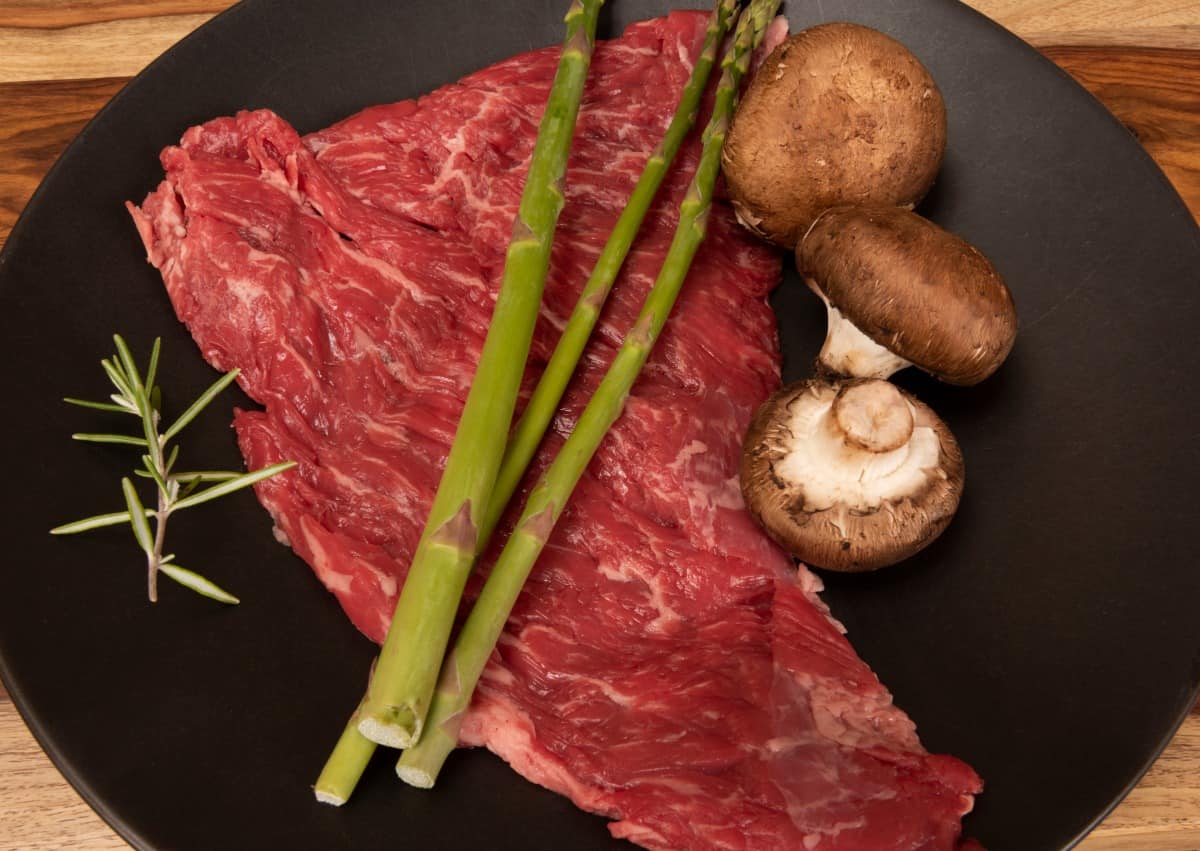
The Bavette steak is a French name, meaning ‘bib’ in French. This name is given to long flat cuts of meat due to their similarity with the bib shape.
Bavette is also commonly known as the Sirloin Flap, and it’s this name that has prevented it from catching on like other steaks. After all, it sounds revolting. But it is anything but!
Bavette is slowly coming into its own, and what was once known as the butchers’ best kept secret, is now slowly becoming popular due to its taste, ease of cooking, size, and value for money. We’re massive fans, and gave it a place in our list of the search for the best steaks for grilling.
Where Does Bavette Steak Come from on the Cow?
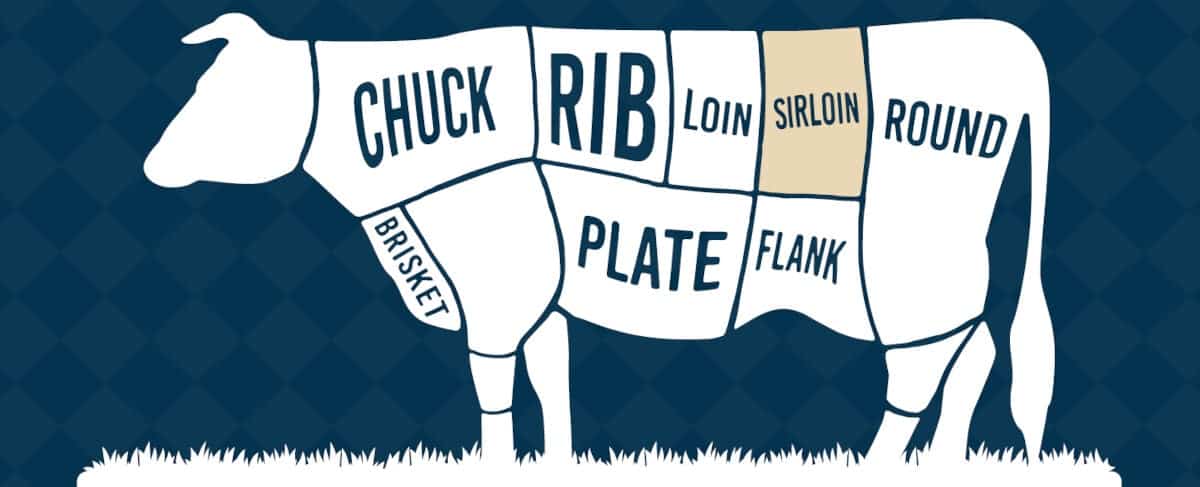
The bavette comes from the sirloin primal, home to popular cuts such as the Sirloin steak, the Tri-tip, and also the Sirloin Bavette. This primal is divided into the top sirloin butt and bottom sirloin butt.
Bavette comes from the inside portion of the diaphragm from the bottom sirloin. It’s located at the intersection of the bottom sirloin, short loin and flank parts of the steer, which is near to the flank and skirt cuts that are located at the plate and diaphragm.
To get even more specific, the name of the individual muscle making up bavette is called the obliques abdominis.
Check out our guide to the best cuts of beef for a comprehensive look at many cuts and where they come from.
Other Names for the Bavette Steak
Bavette has a few different names that are used to refer to it:
- Bavette
- Flap steak.
- Bottom Sirloin Butt — Refers to the location it is found in, and the position where it butts against other intersecting muscles.
- Bottom Sirloin Flap — Uses location and commonly used name ‘flap’.
- Bottom Sirloin Flap Bavette — If in doubt, use this name as it encompasses all possible names for the Bavette steak.
As touched on before, the bavette is often confused with the Flank and Skirt steaks that are very similar in appearance. If we think of them as a trio of long thin cuts, we will remember that they are Skirt, Flank, and Flap (Bavette). That way, you will be able to differentiate them.
If you’re still stuck, then when discussing bavette it has the industry ID, UPC–1302.
Flavor, Texture, Fat Content and Tenderness
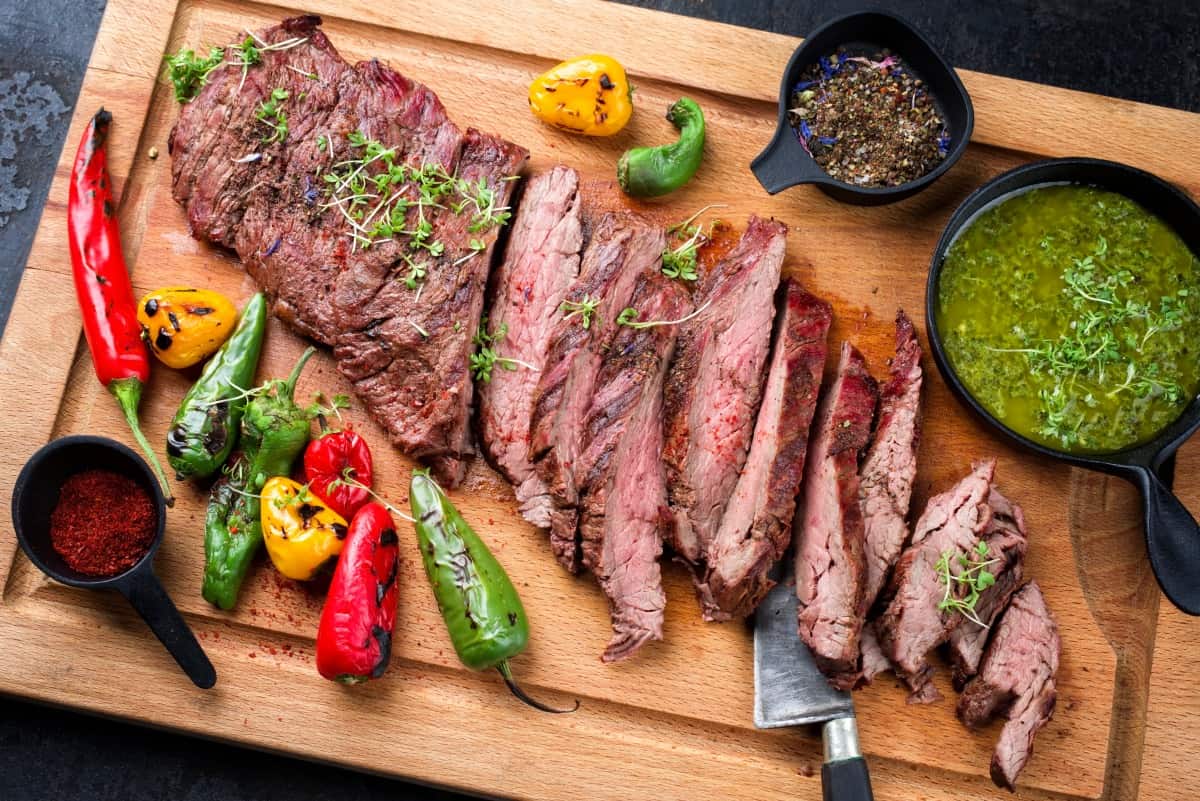
The Bavette steak is renowned for its good strong flavor. This allows it to stand up to strong sauces and accompaniments. It’s thicker than the Skirt or Flank steaks and more tender, so is often considered the better meat sibling in the trio.
With less stringy fat than the Skirt, it has an easier chew and a similarly wide grain and coarse texture, meaning the marbling is also better quality.
This visibly loose and open structure has two distinct benefits. Firstly, it creates tenderness in the meat as the fibers are not tightly bound to one another, and secondly, it soaks up marinades allowing them to penetrate deep into the muscle fibers for a flavor intensity that tighter grains cannot match.
Typical Uses for Bavette
The Bavette steak is typically used for fajitas, stir-fry’s, and other recipes that use beef steak strips to give tenderness and meaty flavor to the dish.
However, bavette is starting to create a reputation for itself as a sharing steak, whereby it’s large enough to feed a big group of people and is easier than cooking individual steaks.
Bavette Steak Nutrition
| Nutrition | Total Amount (Based on 3 oz Serving) | % Daily Value (based on 2000 calories/day) |
|---|---|---|
| Calories | 172 | 7.5% |
| Saturated Fat | 4 g | 20% |
| Sodium | 60 mg | 3% |
| Protein | 19 g | 40% |
| Iron | 2.0 mg | 8% |
| Zinc | 5 mg | 35% |
In addition to the above nutritional benefits, the Bavette steak is full of other nutrients such as vitamin B6, vitamin B12, niacin, selenium, phosphorus, choline, and riboflavin.
Buying Bavette Steak
When buying bavette steak you will often find it isn’t always readily available compared to other beef cuts, but this is dependent on where you go for your meat.
Good butchers will always be able to offer it if you call ahead. In contrast, supermarkets won’t necessarily have it in the same way that they will stock Skirt or Flank steak. This is because it’s simply not as popular, almost entirely because it’s referred to as Flap steak, which isn’t a particularly great marketing name!
Bavette has recently risen in popularity and should become more readily available as time goes by. All this underrated steak needs is a good rebrand if you like.
The easy way to work around the lack of availability is to use online meat markets. Most will sell Bavette steak, labeled as such, in weights varying from 12oz to 1.5lb. plus.
Bavette Steak Price
Bavette steak is still good value for money compared with the premium steaks available. At the time of writing, Bavette steak was priced between $20 and $37 per lb.
Portion Size: How Much Bavette Steak Per Person?
A good portion size for bavette steak is 150 grams to 200 grams per person, maybe as high as 300 grams for big eaters.
With some Bavette steaks weighing in at 1.5lb. plus, it will be less a question of how much to serve and more a matter of how much you can eat. And this makes a Bavette steak perfect for a large gathering of people or a family meal.
If the whole family fancy steak and chips, the Bavette steak means you only have to cook one hunk of meat. And due to the tapered edges if some people want, say, medium and not medium rare, they can have the outer end piece while the real carnivores can devour the central pink goodness.
My Personal Experience with Bavette Steak
I’ve always been intrigued by less common cuts of beef, and the bavette steak is a standout for me. Its rich flavor and tender texture have made it a personal favorite of mine. I’ve found it incredibly versatile. It takes well to bold marinades and simple seasonings and is perfect for grilling or pan-searing.
My preferred method is to marinate it briefly and then cook it over VERY high heat to a medium-rare to medium finish, which really brings out its unique taste. I then serve it with my homemade chimichurri sauce.
I have overcooked bavette before, which made it tough and chewy, so please take extra care not to overcook it.
Also, I’ve found it needs to rest for 10 minutes minimum, double the time for most steaks. If you cut into it too soon, it loses so many juices! They literally come flooding out onto your cutting board, more so than with any other steak.
In my opinion, bavette steak offers an unrivaled combination of taste and tenderness, making it a must-try for any steak enthusiast.
How to Prepare Bavette Steak for Grilling or Smoking
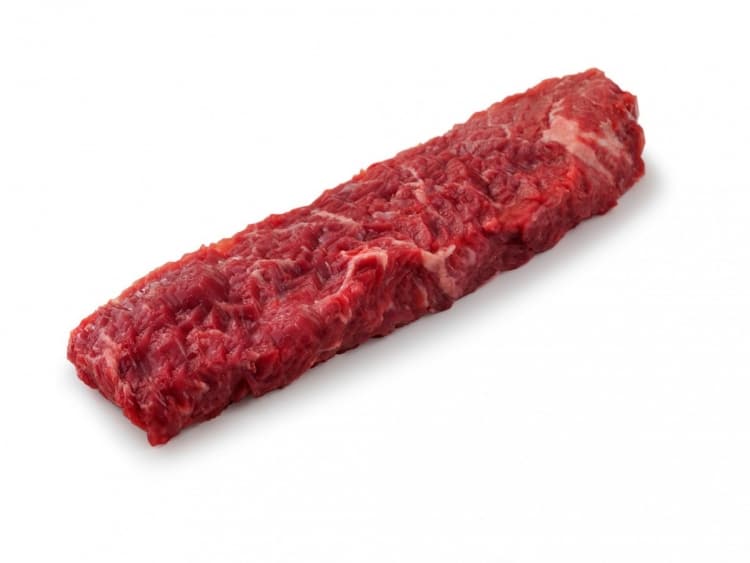
Bavette steak will come ready to cook without the need to trim it. While you can grill it like a regular steak on open coals, the best way to cook it is low and slow in the smoker or on a temperature-controlled grill.
If you are cooking bavette on open coals on high heat, you might want to tie it off so that the thickness is more uniform across the length because bavette is thinner at one end compared to the other. That way, your cooking will be more accurate. Just take care not to burn the outer before the center reaches the correct temperature.
Medium-rare is the ideal way to cook it, and any more than that, you risk ruining the mouthfeel, with it becoming stringy and hard to chew.
How to Cook Bavette Steak on a Grill or Smoker
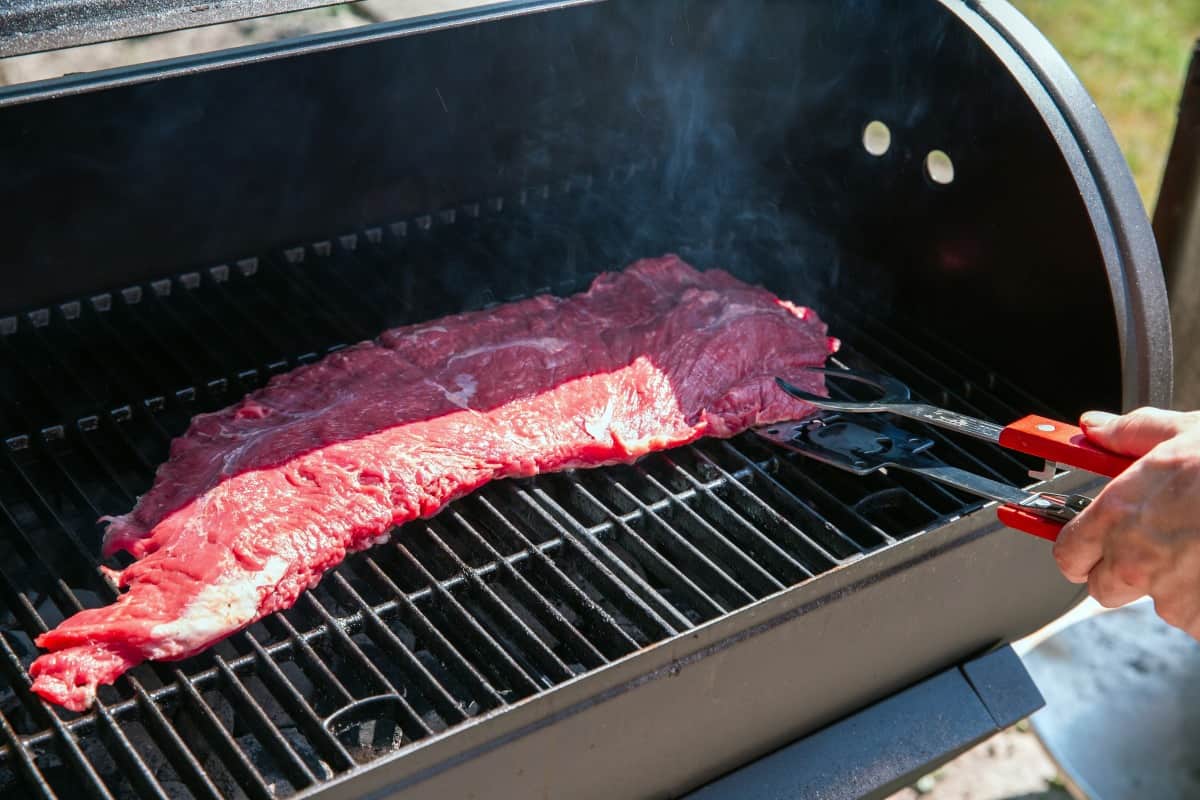
Smoking your Bavette steak is best done as a reverse sear setup. Prepare your smoker to your preferred setup, with coal, pellets or wood chips that suit your desired recipe.
The Bavette steak takes very well to a good marinade, which as discussed in our article on how to tenderize steak, can also make it much more tender. So be sure to let it do its thing overnight with a good strong-flavored sauce. Or even a stout spicy dry rub if you are short on time.
Here’s our guide to smoking the perfect Bavette steak:
- Prepare your smoker with your wood chips or chunks of choice and heat to around 225 °F.
- Place the whole bavette into the smoker, preferably with a remote thermometer placed in the center so that accurate temperature can be checked periodically. For approximate cooking time, it depends on the thickness, grill temp and more, but for approximate times check out or article on steak grilling times.
- Rare — 115 °F (Finished temp 125 °F) approximately 80 minutes.
- Medium-Rare — 125 °F (Finished temp 135 °F) approximately 90 minutes.
- Medium — 135 °F (Finished temp 145 °F) approximately 100 minutes.
- Once at the desired temperature, add additional coals to the grill and raise the temperature to maximum, usually somewhere around 600 °F.
- Remove steaks at the desired (nearly done) temp and place on to the grill and sear both sides until the correct temperature is reached for your wanted finish.
- Allow to rest for 10 minutes.
- Cut against the grain and enjoy!
Where to Buy Bavette Steak Online
Here are three online outlets that sell good quality Bavette steak that you can trust:
Snake River Farms
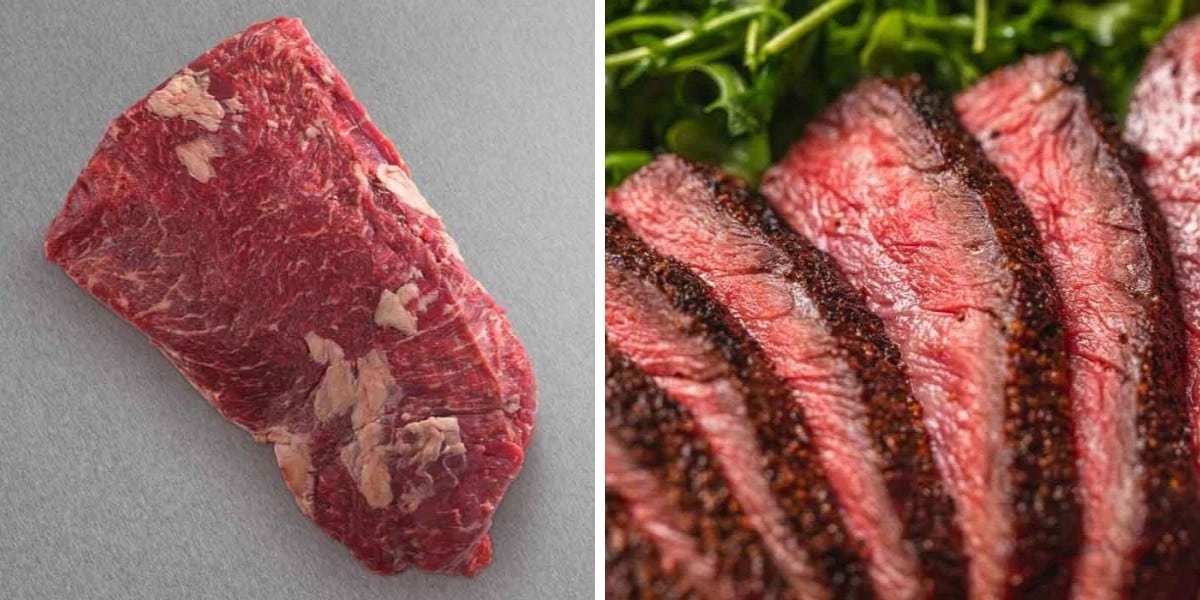
Snake River Farms bavette is from their American Wagyu black grade range, and is packed with more marbling, richness, and flavor than most competing products. The average weight of this cut is 1.5 lbs.
Check Price at Snake River Farms
Crowd Cow
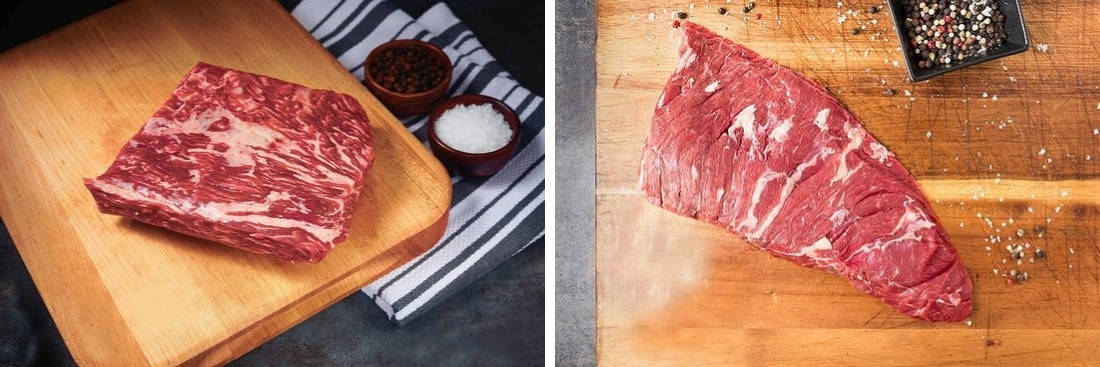
Crowd Cow sell bavette steak sourced from two different suppliers:
Wagyu cross sourced from the Mishima reserve, and come sin at an average 12oz weight.
Or a 100% grass fed steak, sourced from Teys, which is Australian bred, internationally recognized. These come in at a weight of 1lb average.
Porter Road
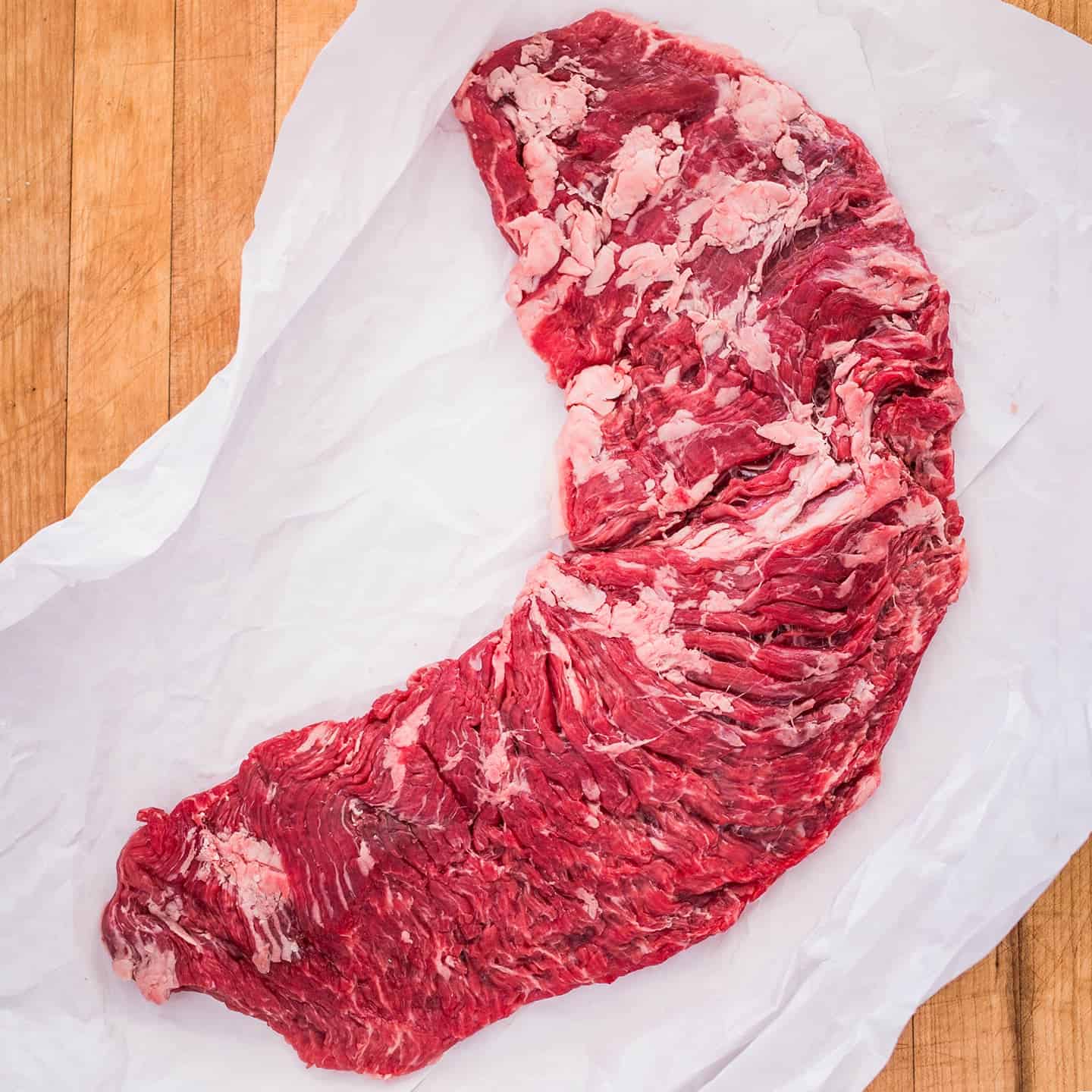
Porter road bavette comes in at between 2.5 and 3.0 lb, ships fresh, is hormone free, antibiotic free, and pasture-raised. This steak is dry aged for a minimum of 14 days to ensure it is tender, flavorful, and sure to impress.
Conclusion
The bavette is, quite simply, a beast of a steak. Not only is it bursting with beefy boldness, it also soaks up marinades like a sponge to give you the best flavor experience, as well as being able to handle subtle accents.
If you are used to delicate melt in your mouth steaks, bavette will be on a different planet to the one you normally visit. The texture alone is world’s apart, not to mention the look, the flavor, and of course the versatility of cooking methods it is happy to go through.
Whatever you choose to do with it, the Bavette steak will broaden your cooking horizons no end. So, get one ordered, get it on the grill, and then get online to let us know how you got on with it in the comments below.



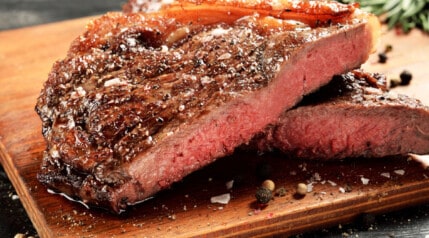
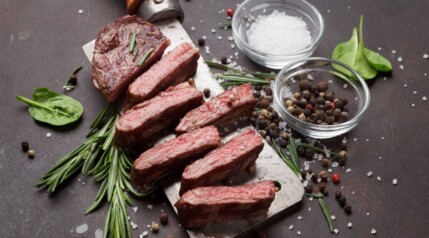
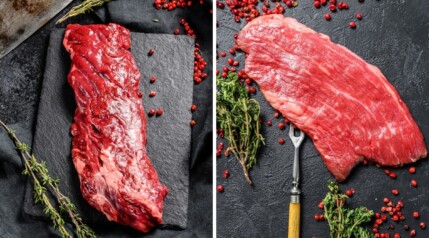
Thanks, Emma! You have given so much wonderful details about this one cut of meat that I had never heard of it until now in my 54 years. I love how you broke down all the details, your good at teaching. I’m so glad I chose your article to learn from. Happy healthy eating to you and your family.!
I went to an upscale grocery to get a skirt steak. I ended up with a bavette steak. I cooked 1/2 of it, and it was good. I pulled the other half out of the freezer and looked at the label and discovered the true identity of the steak.
Your article was very informative, and I will be looking for another bavette steak in the future. Thanks, so much!
Thanks, Kimmi. Gad you enjoyed the steak, it’s one of my favorites! Well, I say that, I kinda like them all, lol.
Well, your colleague disagrees (as does a Belgian website for restaurateurs, in 3 languages: https://horecawebzine.be/vleesbenamingen-frans-engels/) with your assertion that bavette is not flank steak: https://www.foodfirefriends.com/what-is-flank-steak/
Ni Nunya,
And the guys in that article would be correct…but so am I! It’s the difference between languages and regions.
In French, “bavette” typically refers to two different cuts: bavette d’aloyau (flap steak / English bavette) and bavette de flanchet (closer to flank steak), but they simply use the word ‘bavette’ to lump the two together. The English / USA “bavette” is most similar to the French bavette d’aloyau.
The flank steak (bavette de flanchet) comes from the lower abdominal area of the cow, specifically from the top right of the ‘swinging flank’ near the back legs, and is known for its strong flavor and coarse texture. The bavette d’aloyau (flap steak / English bavette), is a larger and more tender muscle, located just below the flank and near the end of the sirloin, also in the lower abdominal region. Both cuts are from the same general area but differ in size, texture, and exact location.
Flank steak has a coarser texture with long, visible muscle fibers and is generally leaner, making it slightly tougher. Bavette steak, on the other hand, has a looser, more open texture with more marbling, giving it a richer flavor and a more tender bite when cooked properly. The differences can and do make a difference when cooking and eating them!
So you and that article are correct for France and some European regions, that flank and bavette are grouped together as just ‘bavette’, although the French have a way to differentiate them (bavette d’aloyau or bavette de flanchet). But I am currently in the UK and English speaking, and this is a mostly UK and USA facing website, so I split the terms up, as does everyone else I know including UK / USA butchers and restauranteurs. We differentiate them as flank and bavette, as do 90%+ of my readers. But you are also correct in your region that they do not do this.
I’ll update the article with this further info in the near future.